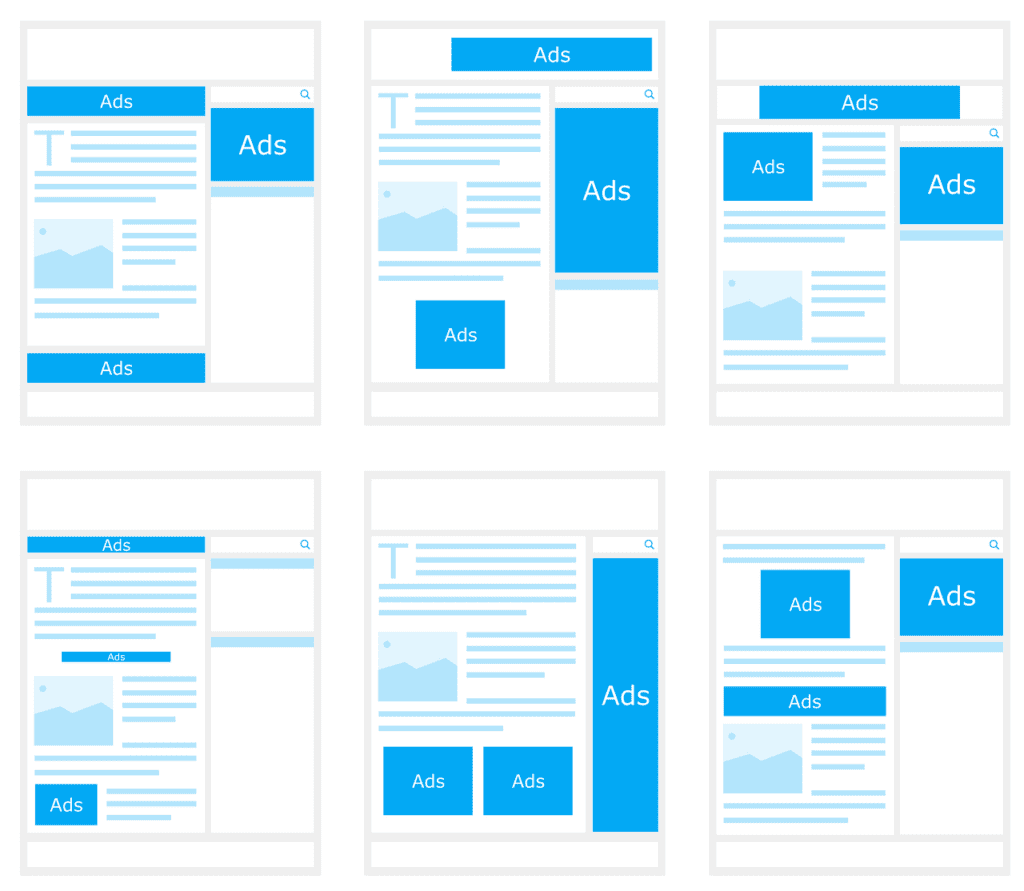In the fast-paced world of startups, where innovation is the heartbeat and resources are often limited, the role of online advertising emerges as a beacon of opportunity. The digital landscape offers startups a dynamic platform to connect with their target audience, scale their presence, and drive growth.
In this comprehensive guide, we will unravel the intricacies of “online advertising for startups,” equipping these budding ventures with the tools to embark on a successful digital journey.
Table of Contents
ToggleWhy Online Advertising for Startups Matters
In an era where consumers’ attention spans are fragmented across screens, online advertising emerges as a powerful way for startups to make their mark. Unlike traditional advertising, online platforms offer precise targeting, measurable results, and the ability to start with even modest budgets.
This digital realm levels the playing field, allowing startups to compete alongside established players.
Step 1: Defining Your Goals and Audience
Every successful online advertising journey begins with clarity on goals. Startups must identify what they aim to achieve – whether it’s boosting brand awareness, driving website traffic, or generating leads.
Equally important is understanding the target audience – their demographics, preferences, and pain points. This knowledge lays the foundation for crafting effective ad campaigns.


Step 2: Choosing the Right Platforms
Not all platforms are created equal, and startups must carefully select those that align with their goals and audience. Social media giants like Facebook, Instagram, and LinkedIn offer diverse targeting options.
Search engines like Google empower startups to capture intent-driven searches through Search Engine Marketing (SEM). Display networks and content syndication platforms broaden reach through visual and contextual ads.


Step 3: Crafting Compelling Ad Creatives
In a sea of digital noise, ad creatives must stand out. Whether it’s a captivating image, a persuasive video, or a succinct text ad, the creative must resonate with the audience.
Startups should focus on delivering a clear message, highlighting unique value propositions, and including a compelling call-to-action (CTA) that nudges users toward the desired action.


Step 4: Budget Allocation and Bidding Strategies
Startups often operate on tight budgets, making efficient budget allocation crucial. The Pay-Per-Click (PPC) model, common in online advertising, ensures that startups only pay when users engage with their ads.
Bidding strategies, such as cost-per-click (CPC) or cost-per-thousand-impressions (CPM), depend on campaign goals. Careful management of bidding ensures optimal utilization of resources.
Step 5: Continuous Monitoring and Optimization
The digital realm is dynamic, and startup campaigns must adapt accordingly. Regular monitoring of campaign performance using key metrics like click-through rates (CTR), conversion rates, and return on ad spend (ROAS) is essential.
A/B testing – where different ad variations are tested – helps identify what resonates best with the audience. Optimization based on data-driven insights is the linchpin of success.
Step 6: Scaling with Success
As startups witness positive results, they can scale their online advertising efforts. This could involve increasing budgets, expanding to new platforms, or diversifying ad formats.
The insights gained from initial campaigns serve as valuable building blocks for larger and more ambitious endeavors.
Step 7: Leveraging Analytics for Informed Decisions
The power of online advertising lies in its ability to provide measurable insights. Startups should leverage analytics tools to track the entire user journey – from ad click to website interaction to conversions.
These insights illuminate which strategies are working and which need adjustment, ensuring data-driven decision-making.
Step 8: Staying Agile in a Shifting Landscape
In the digital realm, change is constant. Platforms evolve, algorithms shift, and trends transform. Startups must remain agile, willing to adapt to these shifts.
Keeping an eye on industry trends and technological advancements allows startups to stay ahead of the curve and maintain relevance.
Step 9: Building Brand Consistency and Trust
Consistency is the cornerstone of brand-building. Startups should ensure that their online advertising aligns with their brand’s tone, values, and identity.
Building trust through transparent and ethical practices reinforces the credibility of startup campaigns.
Step 10: Embracing Creativity and Innovation
In a competitive digital ecosystem, creativity is a startup’s secret weapon. Innovative ad formats, interactive content, and out-of-the-box strategies can capture users’ attention in novel ways.
Startups that embrace creative thinking stand to differentiate themselves and leave a lasting impression.
The Role of Retargeting in Online Advertising for Startups
A core principle in online advertising is the journey users take after clicking an ad. This journey can often be complex, involving multiple touchpoints before a conversion occurs.
Retargeting, a powerful strategy, allows startups to re-engage users who have interacted with their ads but haven’t converted.
Through strategic placements of ads across platforms, retargeting keeps startups in users’ minds, nurturing their interest until they’re ready to make a decision.
Advantages of Online Advertising For Startups
In the dynamic landscape of modern business, where startups are the trailblazers of innovation and disruption, the role of online advertising stands as a beacon of opportunity.
As these budding ventures venture into the digital realm, they unlock a plethora of advantages that traditional advertising methods struggle to match.
1. Cost-Effectiveness: Maximizing Limited Resources
For startups with limited financial resources, every penny counts. Online advertising emerges as a cost-effective alternative to traditional advertising methods. Unlike costly TV, radio, or print campaigns, digital advertising allows startups to set budgets that align with their financial capacities.
Whether it’s pay-per-click (PPC) or cost-per-impression (CPM), startups have the flexibility to tailor their campaigns to their financial parameters, ensuring optimal resource utilization.
2. Precise Audience Targeting: Reaching the Right Users
One of the most potent advantages of online advertising lies in its ability to precisely target specific audience segments. Startups can define their target audience based on demographics, interests, behaviors, and even location.
This laser-focused targeting minimizes wastage by presenting ads only to individuals who align with the startup’s ideal customer profile. The result is a more engaged audience, higher click-through rates, and increased chances of conversion.
3. Measurable Outcomes: Tracking Progress in Real Time
In the digital arena, startups aren’t left in the dark about their campaign’s performance. Online advertising platforms offer a wealth of data that can be analyzed in real-time.
Metrics like click-through rates (CTR), conversion rates, and return on ad spend (ROAS) provide insights into the effectiveness of campaigns. This data-driven approach empowers startups to make informed decisions, adjusting strategies on the fly for optimal results.
4. Flexibility and Adaptability: Pivoting in Real Time
Startups are known for their agility, and online advertising complements this trait perfectly. Unlike traditional methods that require extended lead times, digital campaigns can be set up, modified, or paused swiftly.
This adaptability allows startups to respond to market trends, user behavior, and even external events in real-time, optimizing their advertising efforts for maximum impact.
5. Global Reach: Bridging Geographic Barriers
The digital realm transcends geographical boundaries, and online advertising offers startups a global reach that was once the domain of large corporations.
With the right strategies, startups can connect with potential customers around the world, expanding their market presence without the need for physical storefronts or extensive distribution networks.
6. Enhanced Engagement: Interactive and Personalized Campaigns
Online advertising is not confined to static banners or billboards. Startups can engage users through interactive ad formats, videos, quizzes, and surveys. Moreover, with the aid of data analytics, startups can personalize campaigns, tailoring messages to individual user preferences.
This personalized approach fosters deeper connections with users and cultivates a sense of brand loyalty.


7. Rapid Testing and Optimization: A Continuous Refinement Cycle
In the realm of online advertising, startups can test different ad variations, headlines, visuals, and even targeting parameters. This A/B testing methodology allows startups to identify which elements resonate most with their audience, thereby refining their campaigns for optimal performance.
This iterative approach ensures that startups are consistently fine-tuning their strategies for maximum impact.
8. Direct Interaction: Two-Way Communication
Unlike traditional advertising that’s a one-way street, online advertising facilitates direct interaction between startups and their audience. Social media platforms, in particular, allow startups to engage in conversations, respond to queries, and build a community around their brand.
This fosters a sense of authenticity and transparency that resonates with modern consumers.
9. Seamless Integration with Other Digital Efforts
Online advertising doesn’t exist in isolation. It seamlessly integrates with other digital marketing strategies, such as content marketing, social media, and email campaigns.
This synergy creates a holistic brand experience for users, reinforcing messaging and establishing a stronger brand presence in the digital landscape.
10. Level Playing Field: Competing with Industry Titans
In the digital realm, startups can compete on equal footing with industry giants. Online advertising’s cost-effectiveness and targeted approach enable startups to punch above their weight, capturing the attention of their desired audience without being overshadowed by larger players.
This levels the playing field, allowing startups to establish themselves as formidable contenders in their respective niches.
Conclusion
Online advertising for startups is not just a strategy – it’s a transformative journey. In a realm where clicks translate to conversions and engagement fuels growth, startups have the power to harness the digital realm to their advantage.
Armed with a clear roadmap, an understanding of platforms, and a commitment to data-driven refinement, startups can navigate the digital frontier with confidence. With every click and conversion, they pave the way for expansion, innovation, and a brighter future in the digital age.




